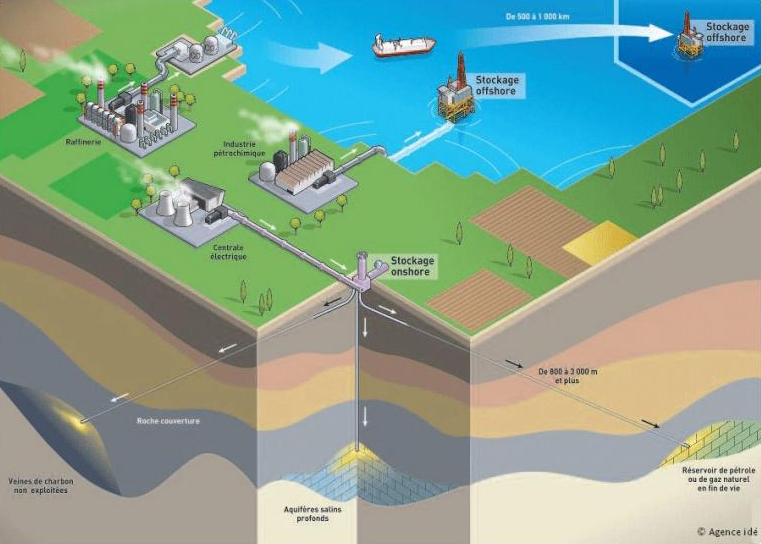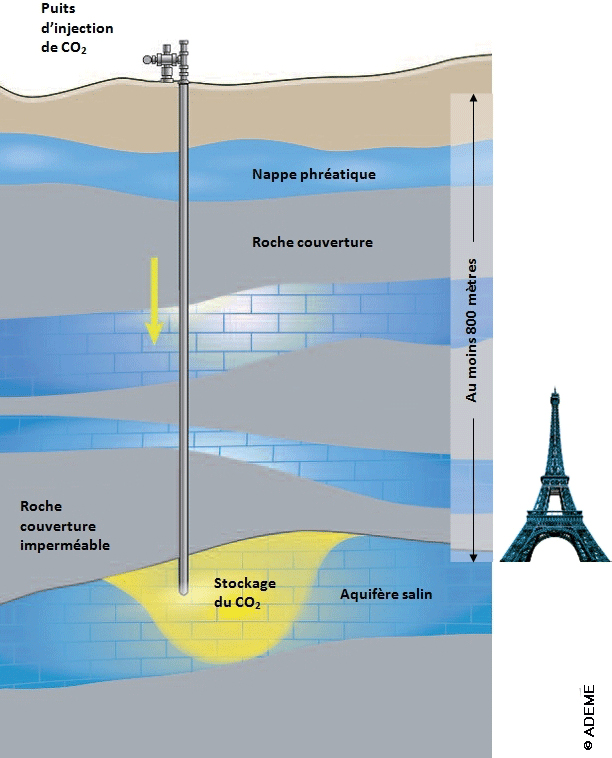Concept
The idea is to trap CO2 in reservoir rocks under the ground, hence the term geological storage. The storage areas can be of different nature: deep saline Aquifers, oil or gas fields soon depleted and coal seams.
Caption: CCUS. Diagram of the capture of CO2 from factories to its transportation in ships, temporary storage (“buffer” stocks) and pipeline transportation. The diagram then shows three types of storage: in unexploited coal seams, deep saline aquifers, and depleted oil or natural gas fields.
From the BRGM

What is a reservoir rock ?
Rocks that are propitious to CO2 storage – reservoir rocks – are found in Sedimentary basins everywhere around the world. They can spread on hundreds or thousands of square kilometers, and several kilometers deep.
Caption: Reservoir rock. View of sandstone rock from scanning electron microscope, 54 times magnified: cavities can be observed, in which water, oil or gas circulates.


Trapping mechanisms
Once injected into the reservoir, the CO2 fills the pores of the rock to travel back up again progressively to the overburden. However, natural mechanisms come into action, contributing on different scales to long-lasting trapping of the CO2 and safe storage: CO2 accumulating under the overburden (structural trapping), immobilized inside the pores (residual trapping), dissolving into water (solubility trapping), and mineralizing (mineral trapping).
Caption: CO2 is lighter than water and tends to go back up to surface. To ensure storage is airtight, the site must contain a waterproof layer above the rock made of clay or salt.




